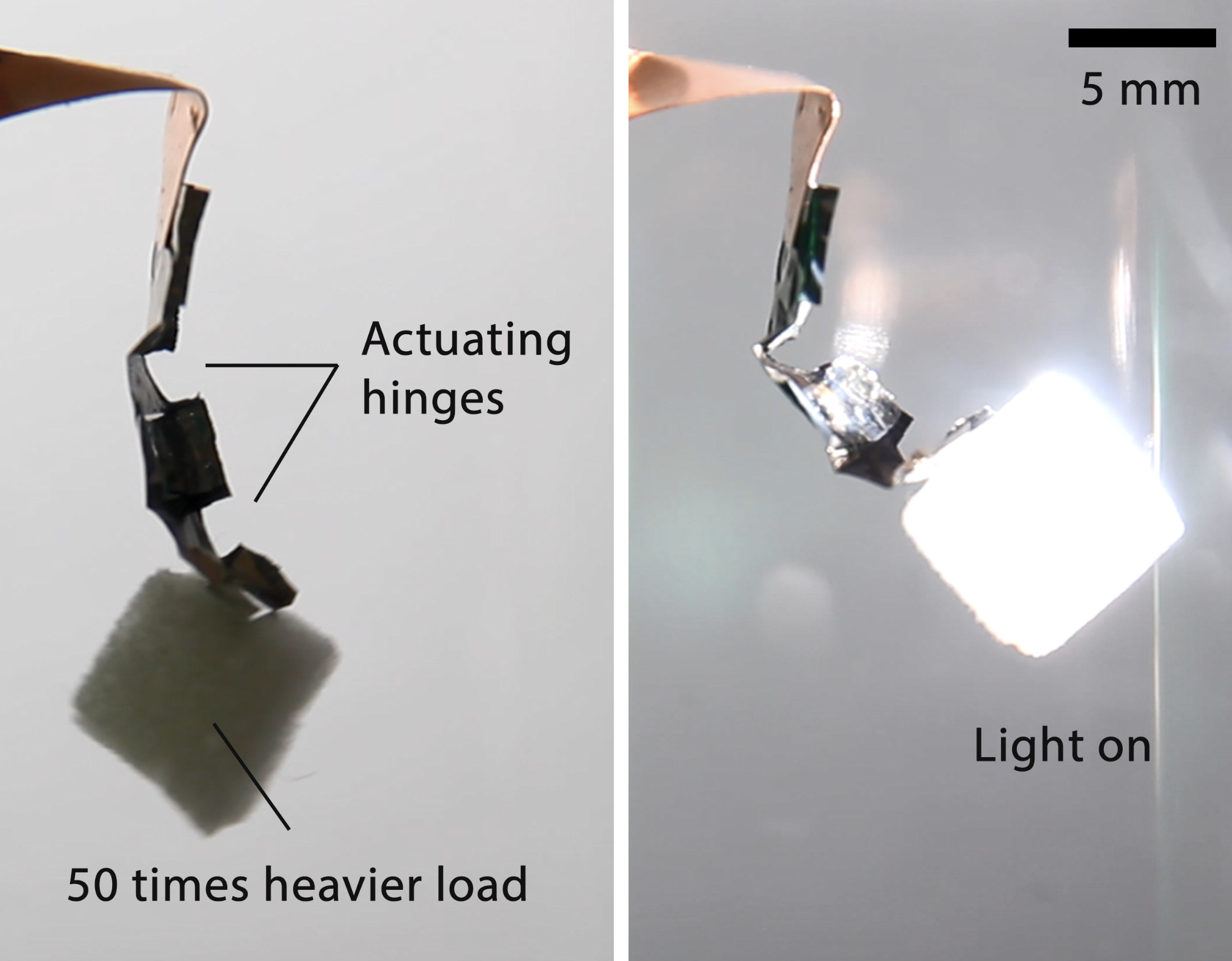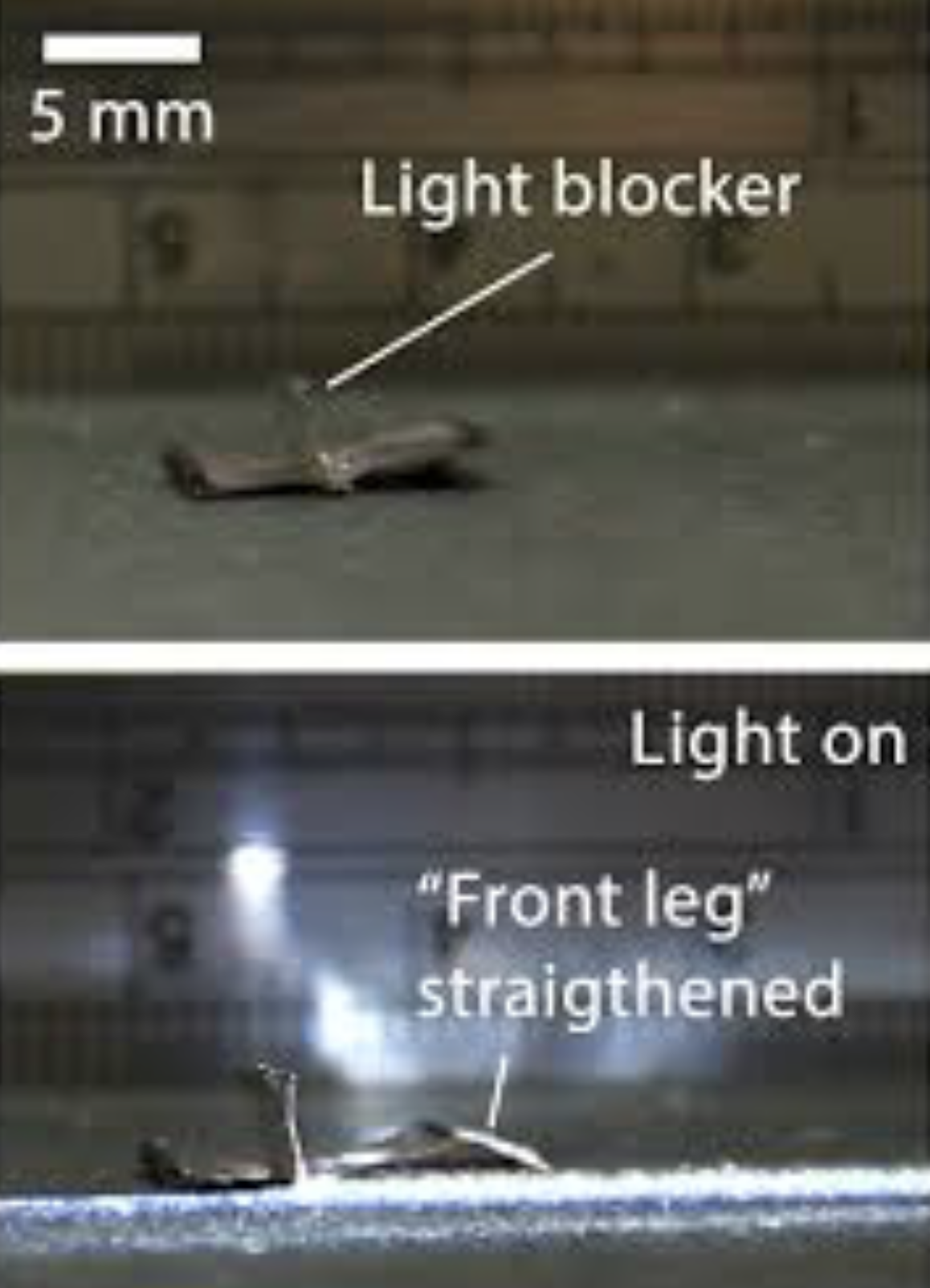digest | New material eliminates need for motors or actuators in robots, proprosthetics, more
April 1, 2021

A “mini arm” made up of two hinges of actuating nickel hydroxide-oxyhydroxide material (left) can lift an object 50 times its own weight when triggered (right) by light or electricity. (credit: University of Hong Kong)
University of Hong Kong researchers have invented a radical new lightweight material that could replace traditional bulky, heavy motors or actuators in robots, medical devices, prosthetic muscles, exoskeletons, micro-robots, and other types of devices.
The new actuating material — nickel hydroxide-oxyhydroxide — can be instantly triggered and wirelessly powered by low-intensity visible light or electricity at relatively low intensity. It can exert a force of up to 3000 times its own weight — producing stress and speed comparable to mammalian skeletal muscles, according to the researchers.
The material is also responsive to heat and humidity changes, which could allow autonomous machines to harness tiny energy changes in the environment.
The major component is nickel, so the material cost is low, and fabrication uses a simple electrodeposition process, allowing for scaling up and manufacture in industry.
Developing actuating materials was identified as the leading grand challenge in “The grand challenges of Science Robotics” to “deeply root robotics research in science while developing novel robotic platforms that will enable new scientific discoveries.”

Using a light blocker (top) a mini walking bot (bottom) with the “front leg” bent and straightened alternatively can walk towards a light source. (credit: University of Hong Kong)
University of Hong Kong | Future Robots need No Motors
Ref.: Science Robotics. Source: University of Hong Kong.